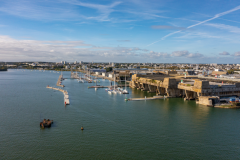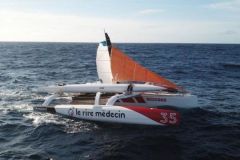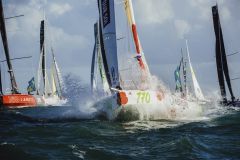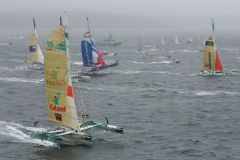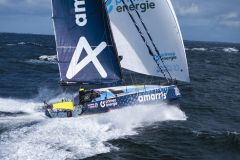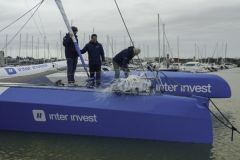The Transat Jacques Vabre is one of the major events in the world of ocean racing. Organized every two years, this double race starts in France and ends in Brazil. From Le Havre to Salvador de Bahia, this 4350 mile course offers a succession of technical weather passages.
This race attracts many skippers in the different classes. On the starting line, there are Class40, IMOCA and Multi50 and sometimes Ultimates. If the latter were present in 2017, they will not be found in 2019.
The Class40 is the most accessible, but what is the budget needed to participate in this race, which is still sometimes referred to as the "Coffee Route"? Skipper Louis Duc, one of the top names in the Class40, revealed the costs of the transatlantic race.
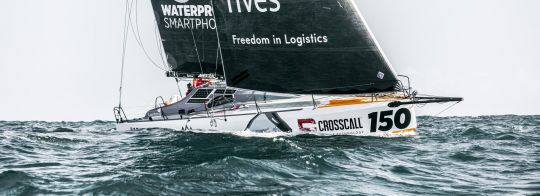
Average budget for a season in the Class40 including the Transat Jacques Vabre.
The majority of skippers will participate in a full season with the TJV as their barley point. To participate in a season and its racing program, you have to count:
- For a new boat of the latest generation: 300 000 euros HT/year
"This budget obviously includes the depreciation of the new boat, a remuneration for the skipper and an occasional trainer."
- For the purchase of a used boat: 150 000 euros excl. tax/year
There are some very good boats that are a few years old. They are often well prepared and reliable.
"I have already run with a budget of 100,000 euros and it was really too low. 150,000 euros is the minimum necessary to do a season in reasonable conditions."
- For a Class40 rental: between 80,000 and 120,000 euros excluding tax/year for a competitive boat.
Average budget to run the Transat Jacques Vabre in Class 40
Some skippers only want to participate in the Transat Jacques Vabre without doing the other races of the season.
- For an old generation boat: 100 000 euros excluding VAT
"Sometimes you can lend yourself a boat or rent one at a lower cost. But you have to think about the after-race, which many skippers forget. The boat must be returned in its original condition, so this involves costs such as changing sails for example, halyards, etc. A transatlantic boat has wear and tear effects on a boat. This is a minimum budget of around 10,000 euros/HT"
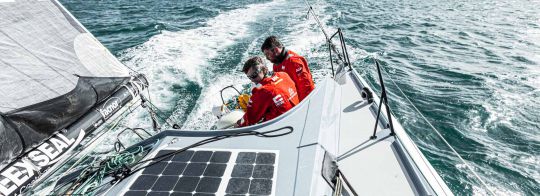
The fixed costs to participate in the race
To take part in the race, in addition to the essential boat, there are incompressible costs. Louis Duc estimates them at 40,000 euros. "This amount is valid for everyone, regardless of level."
- Registration: 5,000 euros for a Class40
- Cargo return or sea transport: 15,000 to 20,000 euros
"In the second case, you have to think about the skipper's remuneration, but also about the extra insurance premium. You therefore need a budget of 12,000 to 14,000 euros, and choose your skipper carefully so as not to have any unpleasant surprises. It will also be necessary to consider that this additional crossing represents additional wear and tear for the boat and therefore additional costs."
- Additional insurance premium for the race: 6000 to 7000 euros
"An annual insurance for a last generation boat costs about 22 000 euros. There is only one actor on the market, it is Pantaenius."
- Running costs: 4000 to 5000 euros
"We are talking here about the mandatory fees that result from participating in the race. You have to stay, eat, book flights, etc."
- Satellite communication costs: 5,000 to 8,000 euros
"It's a reasonable budget that includes sending about 5/6 videos during the race. If the skipper only sends emails without images, we move on to a budget of about 1,000 euros."
- The co-skipper
"There is no generality or rule, whether professional or amateur. In the case of a winning project, the sponsor can employ a coskipper who will be at the disposal of the project. It is therefore a profession in its own right where the skipper is an integral part of the project, as can be seen in IMOCA.
Some will choose to buy the skills of a Figaro player, they are professional sailors who are in high demand for their skills. They then agree on a rate, as there is no basic rate.
We can also leave with a skipper who brings a part of the missing budget. This can be useful for projects that lack funds.
Finally, as in my case, two skippers can join forces to find funding."







